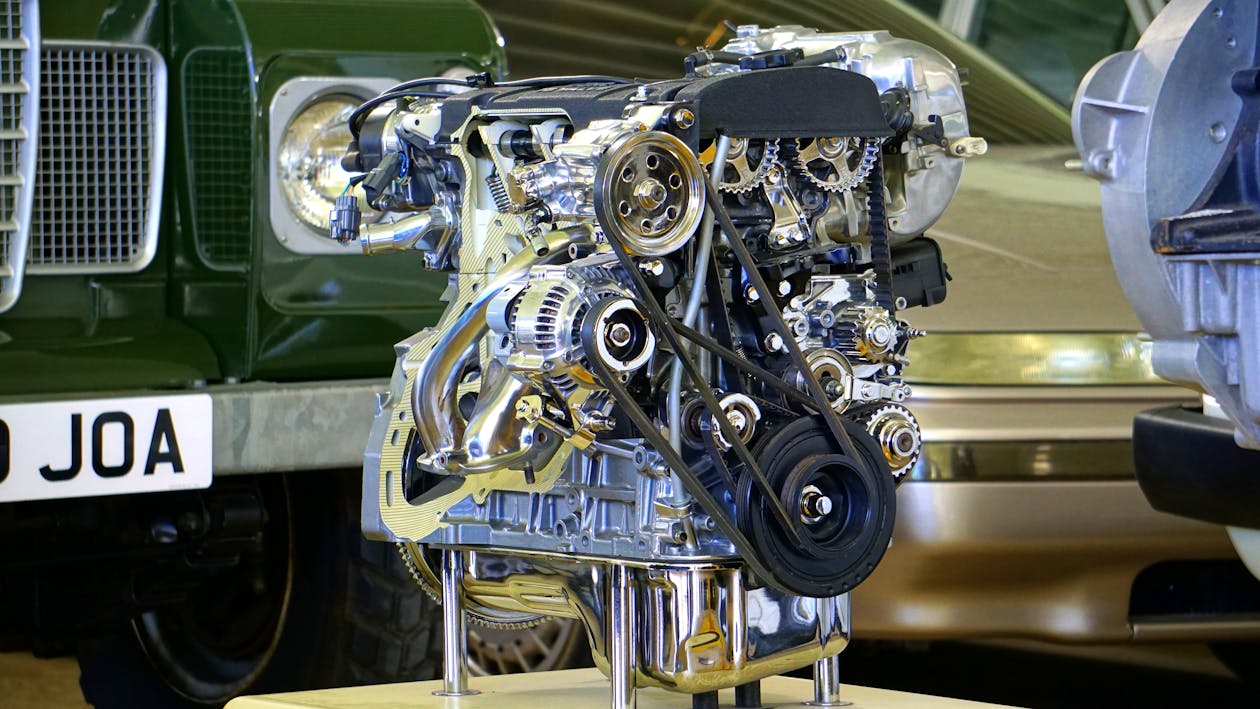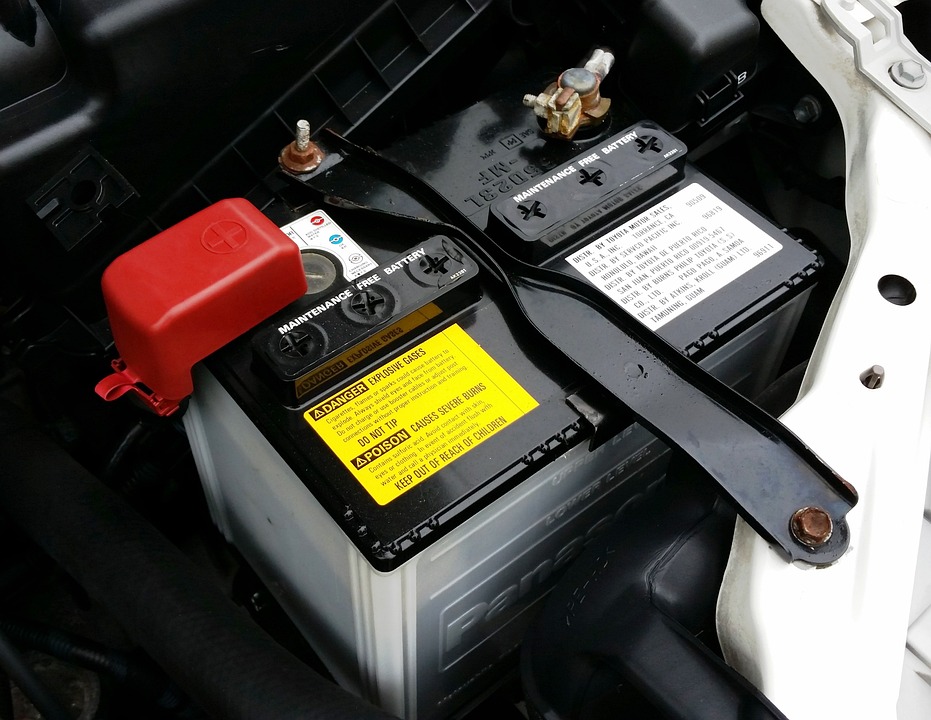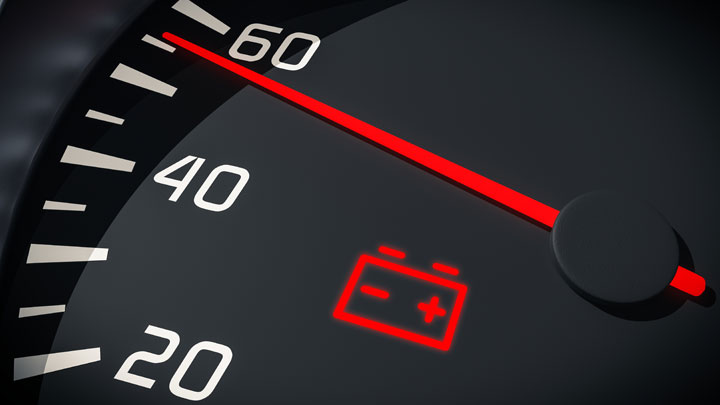A battery light illuminating your dashboard can put a damper on your day. A battery warning light comes on to indicate a battery charging problem. Since your charging system is made up of multiple components, there are a few different possibilities that could trigger the battery light. Today, we are going to look at 7 reasons your battery light comes on.
A Bad Battery In Your Vehicle
One of the most common causes of a battery light is a bad battery. Batteries are designed to last for several years, depending on the type of battery that you choose. This can be anywhere from 2-3 years up to 10+ years in some instances. However, several factors can influence how many years of good battery charging you will get.
If your car sits outside and is exposed to extreme weather for long periods of time, your battery would most likely suffer damage that decreases its life expectancy. Also if you have been overworking your battery due to damaged charging system components, you may see a reduced battery life as it is having to work harder to charge your vehicle. Batteries can also die from not having any water left in the battery.
A battery that is dead usually presents itself in the form of a no-start condition. Your battery stores electricity to help start your vehicle while the alternator continues to produce electricity to be stored in the battery. It also kicks start your starter which helps to turn over your engine. If you do not hear your starter engage, your battery is most likely dead. If your battery light comes on and your car will not start, chances are, your battery would need to be jump-started, recharged, checked, or replaced. If your battery light comes on in your car while you are driving, you might have issues in other places of your charging system.

You Might Have A Dead Alternator Or It Is Going Out
The biggest offender when it comes to a battery light condition while driving is the alternator. During the lifespan of most cars, you can expect to place the alternator at least once as these usually last a long time. Since this part is used at all times and spins faster depending on acceleration, it will mean that it sees a lot of wear and tear.
Alternators are mounted in line with your accessory drive and are usually powered by a serpentine or v-style belt. The belt spins the pulley on the alternator, recharging and creating energy to be stored in the battery. When an alternator goes bad, you will not only get a dashboard battery light, but you will most likely notice your car powering down while driving.
A bad alternator is usually going to present itself while driving as their primary job is recharging the battery while the car is on. Due to their construction, alternators can go bad without showing any physical wear and tear. Most of their windings and electronics are housed inside a metal cage-like housing. You can usually have your alternator checked at your local parts store if you suspect that your battery is fine and your alternator might be the reason for your car battery light. A new alternator will get your charging system back in action.

Your Alternator Belt Is Slipping Or Wearing Out
If you are starting to see a decrease in performance in your charging system while driving, the problem could reside in a bad alternator belt. The alternator belt is the serpentine or v-belt that drives most of your car engine’s accessories. This will need to be apart of your routine maintenance and their service interval will vary depending on manufacturer and engine. The best way to keep up with this maintenance is by checking your owner’s manual for the maintenance schedule to determine when you should replace it.
A bad belt can easily be determined by a visual inspection. Serpentine belts have several rubber grooves in them that keep them on track when installed onto your alternator pulleys. Over time, these grooves can become brittle and crack, causing it to slip or snap. Slipping can usually be identified by a squealing sound from under your hood while driving. This is going to most likely be the first sign before seeing a battery light.
Alternator belts can also start to slip from wearing down due to old age. This can be brought to your attention by a squealing sound or a battery light coming on intermittently while driving. This can be a big problem for a car battery as you might not notice it as much as a constantly illuminated battery light. Get it fixed with a new factory replacement to ensure it is functioning properly.

Corroded Battery Terminals Are Affecting Connectivity
A very common problem that can turn a battery light on is something as simple as loose or corroded battery terminals. If you have ever lifted the hood on your car and noticed your battery terminals covered in corrosion, you could be experiencing poor performance from your charging system. This corrosion that builds up on your car battery posts is quite common and can easily be remedied using a few different methods. Here is a quick how-to video explaining the easy process or cleaning a battery terminal
The battery terminal connects to the battery cables in your charging system to allow energy to flow to and from the battery. Once corrosion starts to build up, this can interfere with the connectivity of your car battery, causing charging issues. This simple problem can trigger a battery light and be fixed fairly quickly and inexpensively.
To check your battery terminals to see if they are loose or corroded, you can simply open the hood of your car to make sure the terminals are clean. To prevent corrosion build-up, you can use di-electric grease on your terminals from your local auto parts store. This grease helps to prevent corrosion built up and keep your charging system working properly.

Loose Battery Cables From Earlier Repair
Perhaps one of the easiest fixes for a car battery light coming on is a loose battery cable or other loose wiring. Battery cables are essential wiring from your charging system to your battery to transfer power to and from your battery via the battery terminals. These come in various configurations with the most popular being a screw-in and clamp style cable. It is important to know which style you have to determine which tools you may need to fix a loose battery cable.
A cable that has become loose will trigger a car battery light due to the connection not being complete. A poor connection will usually present itself with an intermittent dashboard battery light flashing on and off. You may also experience many electronics in your car flashing or working intermittently while driving such as your power windows, headlights, cell phone charger, or radio.
A battery cable can become loose over time if you have been removing it and reinstalling it. While you may not mean to, it can happen to anyone. Most of the time, this happens by mistake when forgetting to fully tighten after working on your vehicle. A great way to prevent this mistake is to make sure they are correctly installed once completing a repair. Check out this video for more information: https://www.youtube.com/watch?v=_XHovPbPo5Q

Your Battery Cables Have Been Damaged
A damaged battery cable can cause a battery warning light as well. If your dashboard battery light has come on and you have ruled out all of the above, check your cables for any damage. Over time, the cables for your battery can become damaged due to weather, repair, or simply old age. These cables are much like any other electrical cable in your engine control system and are going to reduce performance when they become damaged.
When checking your cables for damage, you will want to make sure your battery is disconnected. Feeling along with the cables in your electrical system when there is power running through them can cause an electrical shock. This can cause a serious injury or even death. You can look at using a voltage meter to narrow down your search if you have access to one.
If your car has a damaged cable leading to the battery, you are going to want to get it replaced as soon as possible with a new set. These damages, when left untreated, can leave your car stranded or cause significant damage to many electronics in your vehicle. Ensure that no tools or foreign objects are left in the battery tray when working on your car.
Too Many Accessories Are In Use For Your Electrical System
Last but not least, a reason your vehicle may be experiencing a battery light on could be due to too many accessories in use. When using electrical related components in your vehicles such as power windows, cell phone charges, interior lights, and other 12 volt accessories, your car battery takes on the load.
This is commonly seen in vehicles that have aftermarket sound systems. The volts load created by the additional electronic equipment is too much for your factory vehicle charging system. This is going to create more work for your battery which can ultimately lead to a car battery light or your battery dying completely.
You can also kill your voltage regulator if you are sending too many volts through your system. The voltage regulator regulates voltage through your electrical system to make sure you are able to have the right amount of volts in the right places. This keeps sensitive electronics safe, such as your engine control computer, and can sometimes fail, causing overloads in certain areas.
If you plan on adding more accessories to your car, your best bet is to run a dedicated battery for 12 volt sources. For those with larger stereo systems, a separate battery can still be a great addition to distribute the load evenly throughout your vehicle’s charging system. Power windows and many electrical components that came factory on your vehicle should still operate with your standard battery just fine when adding another battery.
Conclusion
In conclusion, your battery light can turn on for many electrical or mechanical reasons. Troubleshooting and diagnosing the problem will allow you to pinpoint your vehicle’s issue to allow you or a mechanic to repair it correctly. While a battery light is not as alarming as a check engine light, you can be left stranded on the road if your battery or alternator fails in your vehicle.
To keep your battery light from turning on in your vehicle, it is important to stay on top of your vehicle maintenance schedule. Periodically check your battery, alternator, cables, and anything charging related to ensure everything is tightened down and corrosion-free. This will help keep your vehicle safe and worry-free for years to come.


